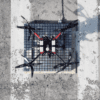News
Perching Helps Drones Extend Operating Time
In their effort to increase drone operations efficacy, scientists and engineers are now focusing on making drone landing and take-off smoother and less energy consuming.
Making drones mimic perching like a bird or a bat seems to be working well for Yale researchers. According to a report in Science Robotics, Kaiyu Hang, a post doc at Yale and his colleagues designed and 3D printed bird-like legs for a drone, providing a simple, novel, inexpensive approach to letting unmanned aerial vehicles (UAVs) perch.
Hang also the lead author of the paper on this new perch-landing published in Science Robotics explains that the team outfitted the drone with three controllable fingers tipped with “contact modules” or attachments that serve as the connecting point with surfaces-allowed the drone to mimic the perching styles of different animals, such as bats or birds of prey.
Perching & then taking off
Listing the benefits of this approach Hang says are not only energy saving but results in better human-drone interaction besides allowing the drone lift larger loads, here’s how:
This new drone gripper lets it grab onto anything smaller than its opening width, like branches, signs, or lights. By hooking one of its sides onto an edge, the drone can switch off two propellers, using about 45% less energy. It can also grasp a rod to hang upside down like a bat, allowing all the rotors to be shut off. Or it can even rest on a stick, which even with the propellers on will use about 69% less energy than hovering.
These perch-and-stare applications where drones sit up high could be useful for drones for making long-term observations.
Giving drones grip can also enable greater lifting strength and safer interactions with humans.
“Once an unmanned aerial vehicle (UAV) is perched, it will be able to lift dramatically larger loads without requiring any power from the rotors,” says Hang adding, “perching and resting can provide lower power consumption, better stability, and larger view ranges in many cases”.
How to make it Perch?
The structure required the leg system to be usable on flat surfaces as well as curved surfaces to perch on. It had to be adaptable to different perch like grip on to various sizes of light pole besides being easily mountable on most off-the-shelf UAVs. Plus its perching method should give the drone vertical lift support too.
Hang and his fellow researchers put the legs through various tests, perching successfully on a variety of surfaces. The UAVs were able to partially or wholly power down without falling. When powered up, they had an easier time taking off again. Now the team will focus on is equipping these drones for real-life conditions like more stability on contact with smaller contact surfaces, like thinner tree branches even in weather outdoors. Success in these efforts could mean marathon drones flights with well timed and efficient perch-and-plan breaks of course.






















